YANGON, Myanmar ― Golden earrings swing from San San Thwin’s ears as she serves customers in her grocery store in Mingalun village, 90 miles from Myanmar’s commercial capital Yangon. This is what she has done almost every day for 30 years, but there has been a striking change in recent times: Every item for sale, with the exception of the eggs at the entrance, now comes packaged in plastic.
“It didn’t used to be like this,” says the 56-year-old. “We used to sell homemade snacks and cakes. But as the country developed, all goods got imported and came wrapped ― plastic just boomed 10 years ago.”
The sparsely furnished shop is now crammed with cakes in colorful parcels, biscuits in plastic boxes, sachets of coffee displayed on a rug. On the shelves, piled up to the ceiling, are medicines and soft drinks in plastic bottles. For San San Thwin, this new plastic world is mostly positive. “We can buy more goods now, because they last longer, so we sell more,” she says. “We wouldn’t go back if it meant less profit.”
Plastic is a relatively recent phenomenon in Myanmar, which opened up its economy in 2011 after five decades of military dictatorship. Rapid economic growth has meant an influx of single-use plastic items like shopping bags, water bottles, food packets, plastic sachets and menstrual pads.
These items have ushered in benefits from being able to preserve food longer in a country that experiences extreme weather conditions, to allowing products to be sold in smaller sachets, making them affordable to those on low incomes. Plastic has also satisfied the craving for modernity and progress after decades of isolation.
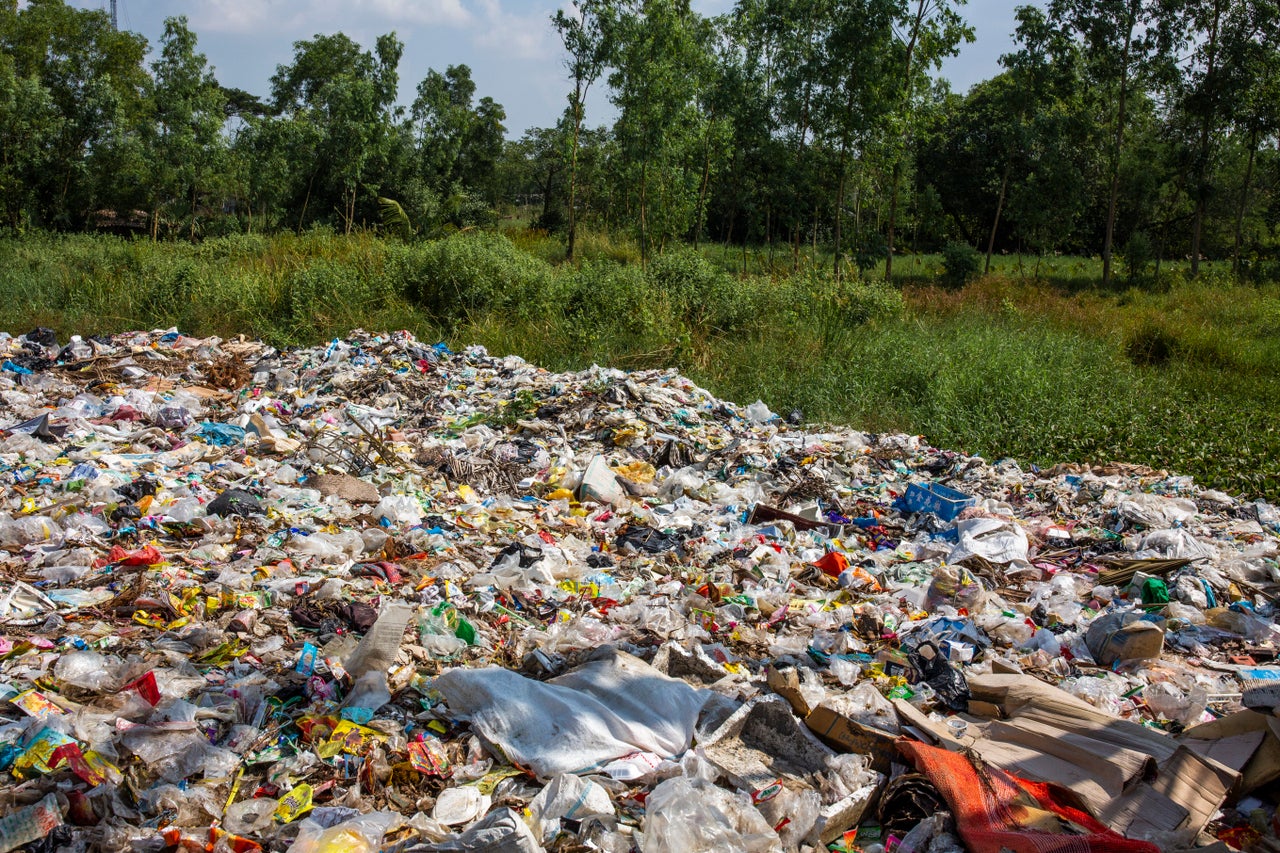
But these products have also launched Myanmar ― which lacks the infrastructure to cope with this tidal wave of plastic ― into a waste crisis. Plastic gets thrown into the environment, with rivers in particular often used as dumping sites, dragging tons of plastic into the ocean where it damages corals, turtles and marine fauna.
As the global movement to reduce single-use plastic grows, Myanmar, along with many other countries around the world, is grappling with two competing needs: the need to tackle ever-mounting plastic pollution and the need to find genuine alternatives so people don’t suffer from the loss of benefits plastics have allowed.
“Plastic is seen as something modern, coming from the West; it’s considered useful,” says May Thet Htwe, who works with Thant Myanmar, a Yangon-based nonprofit that advocates for plastic reduction.
The nongovernmental organization is trying to organize community-based waste collection and educate people about the plastic crisis across the country through its local staff. But the lessons are not always welcome. “We often encounter resistance,” says Friedor Jeske, the co-founder of Thant Myanmar. “Sometimes the villagers shout back at us.”
This resistance reveals how important plastic has become in people’s lives, just as it has in Western countries.
One of the key advantages in Myanmar, especially with its tropical monsoon climate, is the ability to better transport and store food, reduce food waste and improve hygiene.
“The pulses got moldy, humidity brought bacteria [before we used plastic],” says 72-year old Daw San Aye, sitting on a rug on the floor of her village leader in Mingalun. She recalls her joy at discovering as an adult that the fish from the market didn’t leak when she used plastic bags. “Life in the village has improved in the past years.”
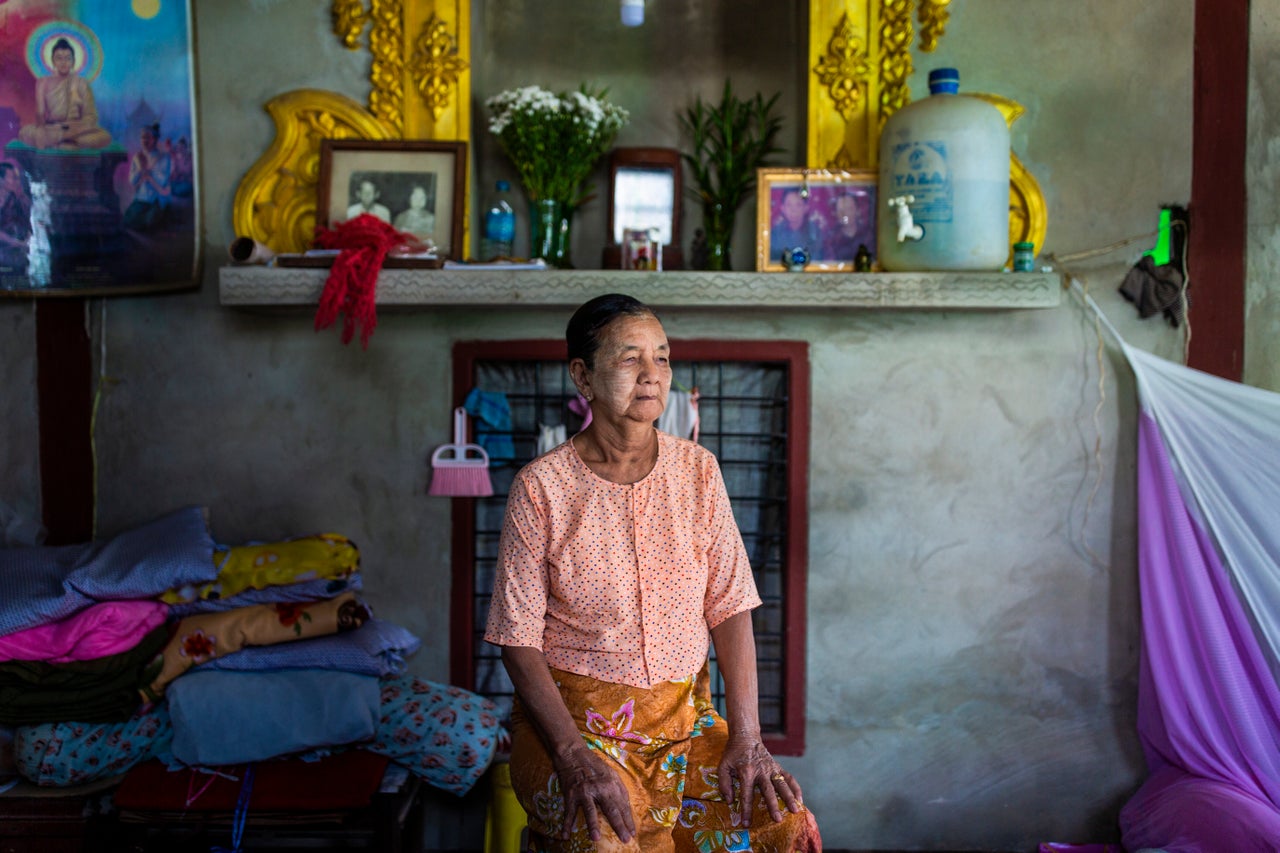
The feeling is widely shared among fellow villagers.
“When we used paper, the sugar melted during the rainy season. We wouldn’t give up plastic,” explains 48-year-old Swe Aung.
And for some, plastic is creating new earning opportunities. In Dala, one of Yangon’s poorest boroughs, 32-year-old Kyaw Win has set up an informal waste-collecting business in the courtyard of his humble wooden stilt house, surrounded by piles of old bicycles, cans, plastic bottles and other paraphernalia.
He earns 4,500 kyat ($3) from each 33-pound bag of plastic he collects. This is considerably less than the 3,300 kyat per pound that he gets from reselling aluminium, but as plastic is more common now, it has become his main source of income.
Yet, while plastic may have brought convenience and new career opportunities for some, its negative aspects are hard to ignore. Though people in Myanmar use far less plastic than Western countries like the United States ― the average American uses 0.74 pounds per day compared to 0.15 pounds per person in Myanmar ― the Southeast Asian nation’s waste crisis is strikingly more visible.

Across Myanmar, makeshift dumps, roads and canals have been overwhelmed by plastics. Rural villages and poor urban neighborhoods, where there’s virtually no waste management, are at a crisis point. On the outskirts of Mingalun, for example, a makeshift dump has grown year by year, with plastic bottles and packaging piling up.
Communities are often forced to conduct open burning near their homes, releasing harmful toxins into the air. In Kan Pyaung, for example, a village just a few miles from Mingalun, residents have no proper landfill, let alone an incinerator. And despite weekly resident trash cleanups, sometimes burning is the only option.
“If there’s wind [all the waste] blows around,” says community leader U Maung Ohn. “So we burn it. And when we do this, we have to [temporarily] move to another village because the air is so terrible.”
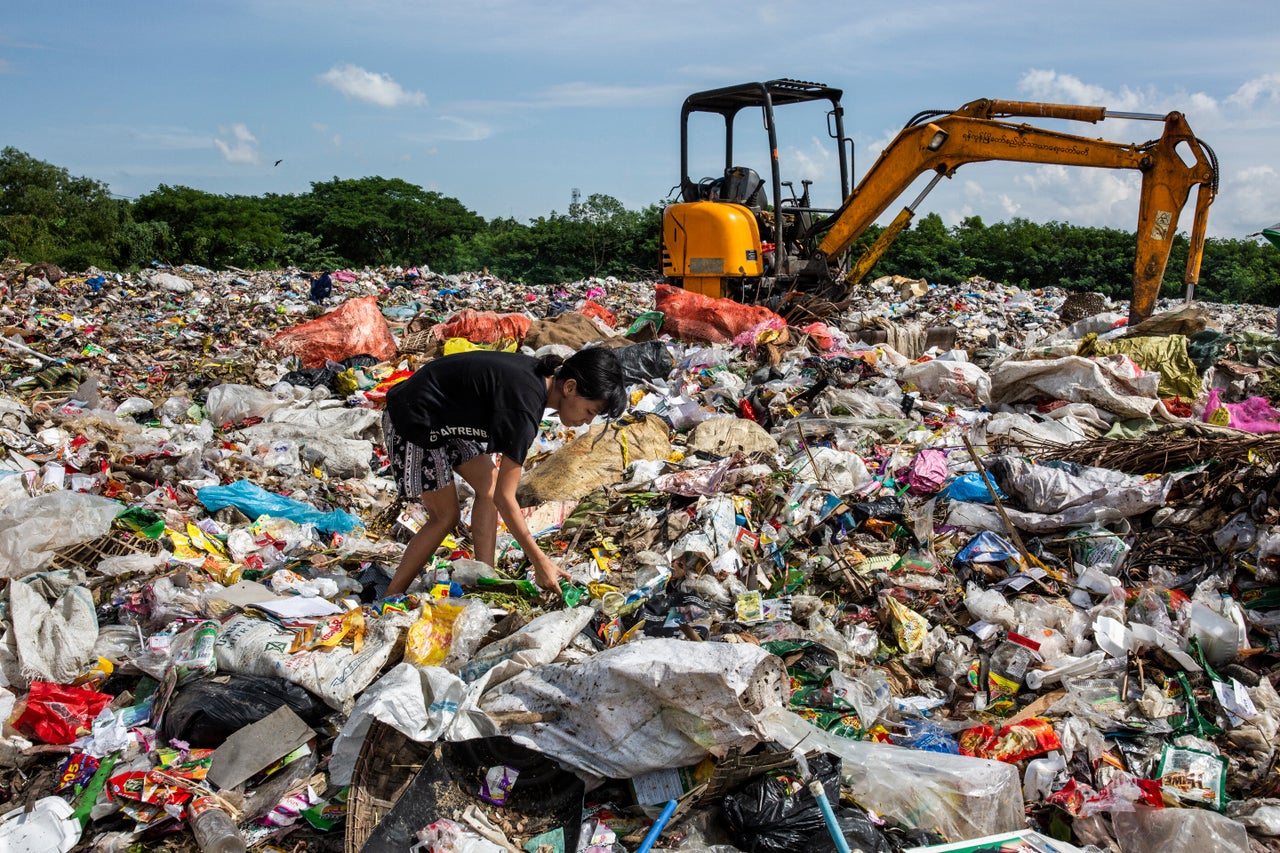
Plastic is also affecting the country’s rivers. Mass dumping clogs waterways, causing flooding and pushing plastics out into the ocean. An estimated 100 tons of plastics per day are discharged into the ocean from the Irrawaddy, the great river that runs through the middle of the country and whose basin is home to 60% of the population, according to data collected by the environmental nonprofit Flora and Fauna International and Thant Myanmar.
Across the bridge from San San Thwin’s grocery, Lei Lei Swe works in her father’s shop. She has received training from Thant Myanmar on plastic management but says she does not always have a viable solution for her waste. On the shelf behind her are menstrual pads. Lei Lei Swe lowers her voice, as periods are still a taboo subject here, and says: “Before we used a cloth, folded four times. Pads are more hygienic, but we wrap them in plastic bags and throw them into the river. There’s no other way.”
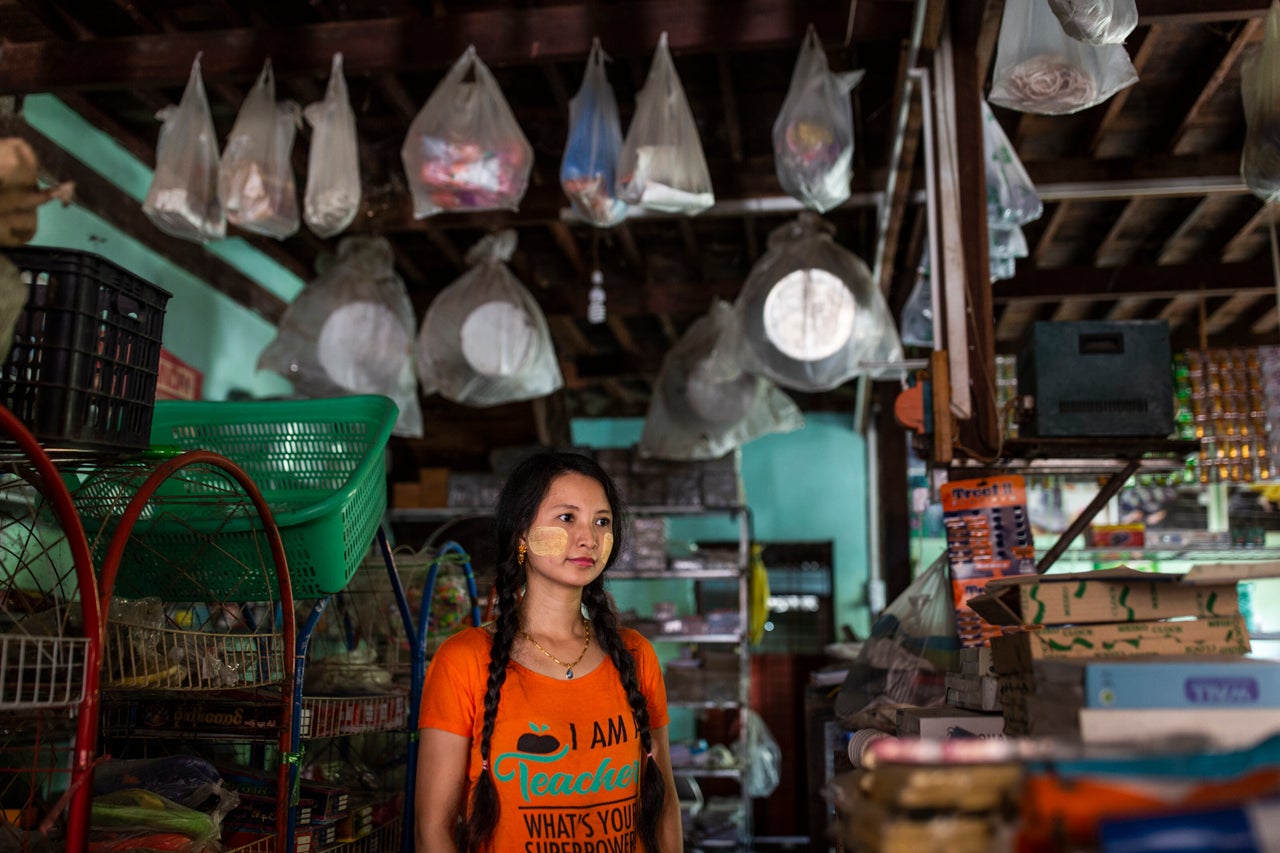
In the absence of adequate waste infrastructure, informal efforts are popping up.
Local movements committed to reducing plastic pollution are sprouting across Myanmar. A beach cleaning network spread across Asia called Trash Hero has organized locals to pick up trash that washes onto the country’s shores from the Indian Ocean. Other regional groups, like RecyGlo, support local and international businesses in differentiating and recycling trash. But these are ad hoc and not a replacement for efficient waste management systems.
Kakuko Nagatani-Yoshida, the United Nations’ regional coordinator for chemicals, waste and air quality, says this is a crucial point in the discussions with governments: “When officials say it’s down to people’s mindset, I ask them: But is the infrastructure in place? Are the options there? I believe that a policy works when even the less aware end up complying.”
Along with improving infrastructure and changing mindsets, companies have a role to play. Thant Myanmar’s Jeske is frustrated that giant corporations based in the West, such as Coca-Cola and Unilever, have flooded Myanmar with plastics. He is particularly critical of companies that sell products in single-serving sachets. They have made millions marketing these tiny portions to low-income people, he says, who lack the cash to buy a full bottle of shampoo or a large container of soap.
Sachets, which are not recyclable, are among the most common pieces of plastic waste in developing nations. Companies ought to bear more responsibility for that waste, says Jeske, adding that they need to deliver more sustainable packaging to people who have come to rely on single-serving items.
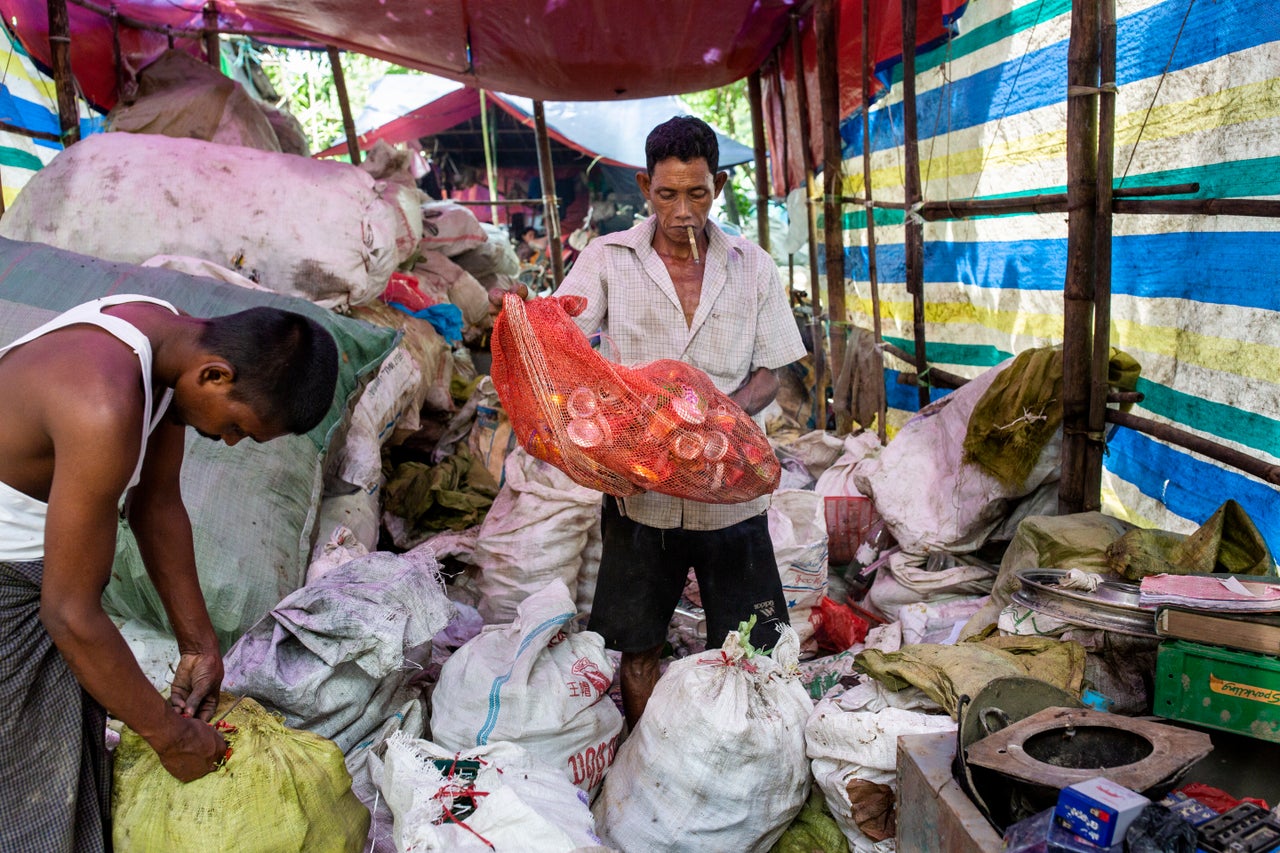
Myanmar’s plastic waste problem is echoed in many neighboring countries. Four Southeast Asian nations ― Thailand, Indonesia, the Philippines and Vietnam ― together with China produce more than half of the plastic contaminating the ocean, according to a report from the McKinsey Center for Business and Environment and the Ocean Conservancy.
That’s why some are putting their hopes in a regional response. The Association of Southeast Asian Nations, of which Myanmar is part, signed the Bangkok Declaration on Combating Marine Debris in June 2019. The document calls “for actions to prevent and significantly reduce marine pollution of all kinds,” addressing the “production, marketing and use of plastics and microplastics.” The aim is to strengthen plastic laws and work on technology to deal with plastic waste.
Tackling plastic waste is always a tricky tightrope ― working out how to reduce plastic use and improve waste collection, without negatively affecting some of the most vulnerable communities. The U.N. warns that plastic legislation must factor in the unwanted consequences of outright bans without viable alternatives, or it will only fuel illegal production. One example is plastic foam containers, now so ingrained in much of Southeast Asian street food culture. Food stall owners would need a viable alternative if they were to drop them.
Solutions to the plastic crisis in Myanmar need to be tailored to local needs, rather than just copied from elsewhere, warns Gauri Pathak, an anthropologist at Aarhus University in Denmark who studies plastic in developing countries. Pathak cites the example of small local cooperatives in rural areas of India that have significantly increased trash collection rates.
And solutions need to acknowledge class differences too. While bamboo straws and other plastic alternatives are being offered in the new hipster bars in Yangon, these cater to more affluent, urban residents and expats. For the majority of people buying food on the streets outside, stalls serve Myanmar dishes in plastic bags that will end up in the ever-growing landfill on the edge of the bustling city.
What’s going to ultimately work is a mix of strong government action to build up infrastructure and force corporate responsibility, but it’s also about tapping into what people need.
The extent of the challenge weighs each day on San San Thwin. “Clients want plastic bags and if we don’t give them to them, they protest and don’t come back,” she says, as her earrings swing again.
For more content and to be part of the “This New World” community, follow our Facebook page.
HuffPost’s “This New World” series is funded by Partners for a New Economy and the Kendeda Fund. All content is editorially independent, with no influence or input from the foundations. If you have an idea or tip for the editorial series, send an email to thisnewworld@huffpost.com.
